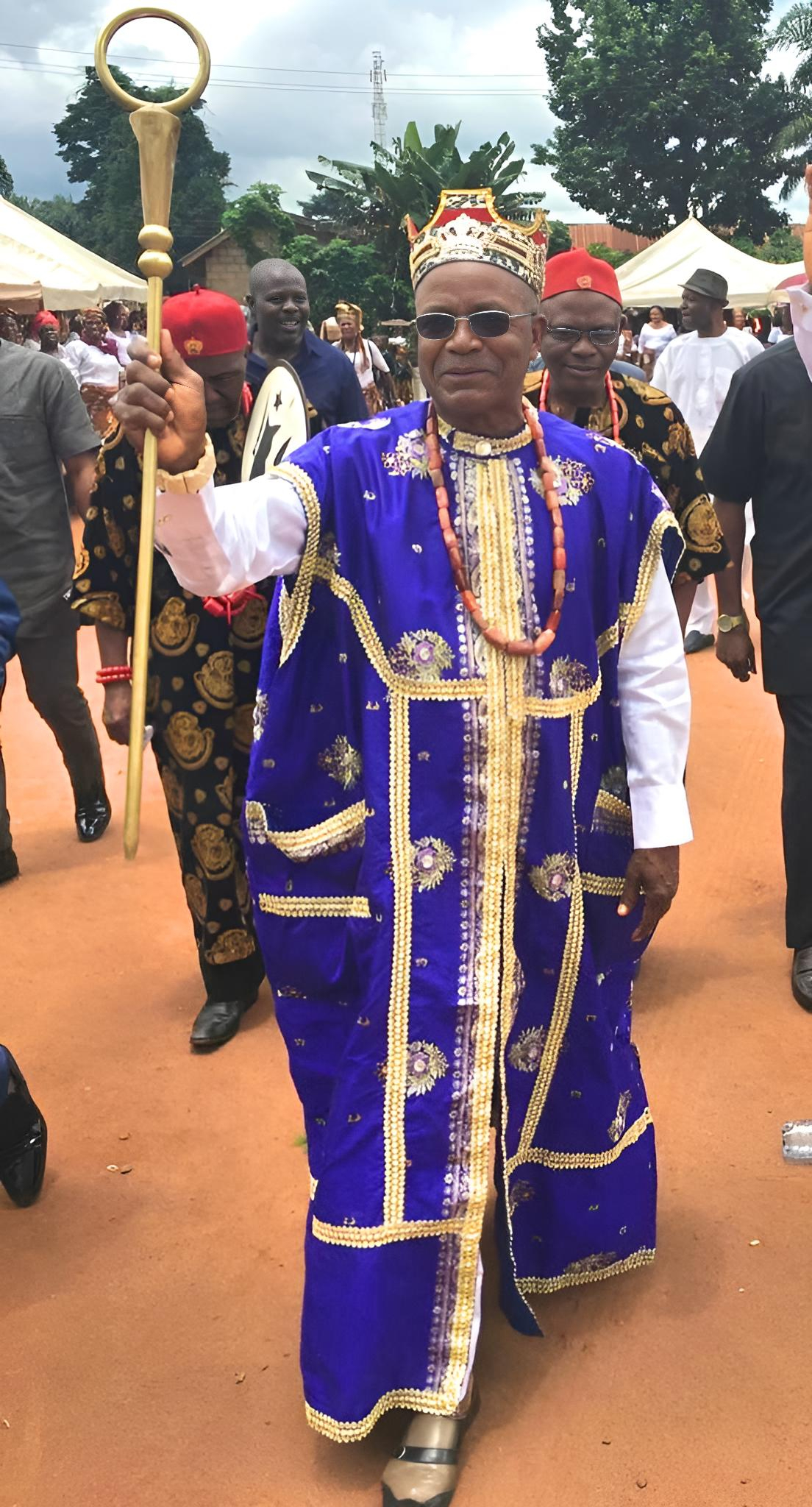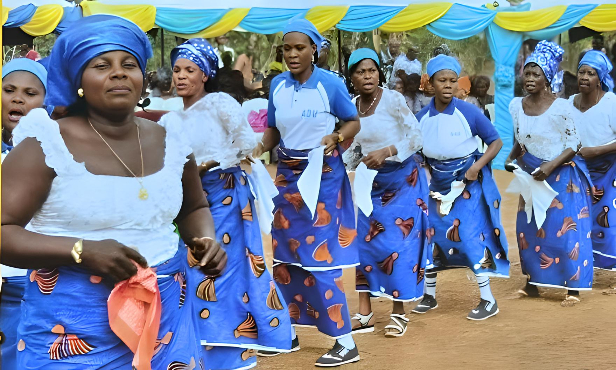AMAUZARI - OUR COLLECTIVE HISTORY
A Synoptic View of the History of Amauzari
By Edward C. I. Diogu, Ph.D.

Amauzari town is one of the largest rural towns in Imo State of Nigeria today. It is located approximately 15 miles south of Owerri, the Imo state capital of Nigeria.
The Birth of Amauzari
There is no known chronological documentation about the birth of Amauzari town. Consequently, very little is known about its beginnings. In fact, all that is known about the
birth of Amauzari is primarily based on folk tales and oral tradition. According to those sources, the founding fathers of the town migrated northward from the neighboring
town of Amaigbo. When they reached Amauzari and saw that the land was dry because there was not any water source in the area, they named the land Ozara, which stands for a
dessert, a name that was eventually adopted by the leader of the settlers.
Thereafter his children became known as Umu-Ozara. It is believed that the name, Amauzari emerged as a corruption of the expression: “Umu-Uzara” which in
the Ibo language stands for “ the children or heirs of Uzara”. The same sources state that the man, Ozara, was a man
of much wealth, married several wives and had ten male children and many daughters. One of the sons of Ozara, named Inyisi, committed incest by sleeping with one of his
sisters. This was a social aberration, an abomination that called for ritual cleansing and restoration. The two adulterers, Inyisi and his sister-lover were to be used in
this sacrifice in order to mitigate the ire of the gods. To save the lives of the offenders, their mother whisked them out of the town by night to the location that, this
day, bears the offender’s name: Inyisi, in Mba-Itoli Ikeduru local Government Area of the Imo State of Nigeria. This explains the origin of the great friendship and
understanding that exist between Inyisi town and Amauzari town today. However, the incident left a void on the demographic and political map of Amauzari.
Political Participation
 Therefore, rather than ten, Amauzari now comprises nine kindred communities. These are Ekwe, Umudim, Umueze, Umu-agwu/Umuero, Okwosu, Okwelle n’Anuzo, Umu-mpelle, Umunumo,
and last but not the least, Umuechem. The nine kindred communities form the basis of the present political configuration and administration of the town. Under the colonial
administration, Amauzari was thrust under the administrative jurisdiction of the former Okigwe District.
Therefore, rather than ten, Amauzari now comprises nine kindred communities. These are Ekwe, Umudim, Umueze, Umu-agwu/Umuero, Okwosu, Okwelle n’Anuzo, Umu-mpelle, Umunumo,
and last but not the least, Umuechem. The nine kindred communities form the basis of the present political configuration and administration of the town. Under the colonial
administration, Amauzari was thrust under the administrative jurisdiction of the former Okigwe District.
This decision made neither administrative nor political sense
at all even to the most judicious mind. Given the fact that Amauzari lies twenty-seven miles away from Okigwe and only fifteen miles from Owerri, the sanest decision would
have been to make Amauzari a part of the Owerri District for all practical intent and purposes. As it eventually became evident, that political arrangement accomplished one
objective only: the total economic and political marginalization of Amauzari. By its latest political dispensation, a new Mbama Local Government Administration has been
created comprising Amauzari, Umunnkwo and Amaraku, with Amauzari to serve as the seat of the new administration. It is hoped that this act by the Udenwa Government, if fully
implemented, will end the long-standing political and economic strangulation of the three communities in question

Economic Life
Economically vibrant and very viable communities surround Amauzari. These include, on the north side, the twin towns of Umuokoro-Umunnkwo. Alaenyi–Ogwa lies to the east of Amauzari, while to the south lies Amandugba, a town that is notorious for her night marauders. Finally, to the west of Amauzari, lie the fast growing towns of Amaigbo and Agbaja, both of which are in Nkwerre Local Government. The famous Orie Amaraku, one of the largest open markets in Imo State, lies only ten minutes away, to the north of Amauzari. Of the communities named above, Amauzari has the largest population. Conservative estimate puts the population of Amauzari between forty and fifty thousand people.
It is an irony of fate that the most populated town is also the poorest town in comparison to her neighbors. Many years of neglect by the Government agencies responsible for rural development have left ugly marks on the town. Amauzari has no access to any of the major arteries or urban centers in Imo State. She has no clean drinking water, no electricity and no telephone services. Even educational and health services infrastructures have suffered much deterioration as a result of years of deprivation.
The economic mainstay of the town is subsistence farming on which most of the population depends for livelihood. Few people engage in rural trading and commerce. Palm produce is the main cash crop that is exported overseas for foreign exchange. In spite of the fore-going dismal picture, the tale of Amauzari hasn’t, by any stretch, been all gloom and doom. Rather, it is interlaced with many bright spots, thanks to that proverbial resilience and self-reliance that have become synonymous with the Ibo nation.
We, “Uzarians” as we proudly call ourselves, are not lacking in that defining attribute of the Ibos. One example of such bright spot is the current revitalization project our organization has embarked on for Aladinma Hospital. Yours truly visited the hospital during my recent trip home. Needless to say that I was both excited and very impressed by what I saw. The mere outside appearance of the facility speaks eloquently to the enormous cleaning work that has been accomplished. The interior was also clean. Much of the paint job has been done and this gives the hospital semblance of a true health services provider, an attribute that is dangerously lacking in all of the so-called federal and state owned hospitals that I visited.
Brethren, we may go ahead and give ourselves a big round of applause and copious pats on the back for moving in the right direction. Nonetheless, this does not mean that we should relax and sit on our laurels and feel that all is well. No! We still have a lot of work to do to bring that hospital up to acceptable standard. The wards, the doctors’ consultation rooms, as well as the out patient treatment areas need rehabilitation and refurbishing. The mortality rate is alarming. Many who go to the hospital even for such minor ailments as headaches end up in the mortuary. I leave you guys to do the math and figure out the solution. I say this to advocate a more dynamic approach to the hospital revitalization project.
Brethren with this little endeavor from here, I bring you sincere fraternal greetings and love. I also beg that you excuse my inability to be there in person with all of you. Last time my failure to attend in Los Angeles was due to ill health. This time the timing is the problem. As a schoolteacher, I am obligated to attend some staff development workshops that are taking place same weekend. I hope to be with you next time around. Meanwhile it is my prayer that the Almighty God bless you with the Wisdom of Solomon as you deliberate on those issues that face our young organization.